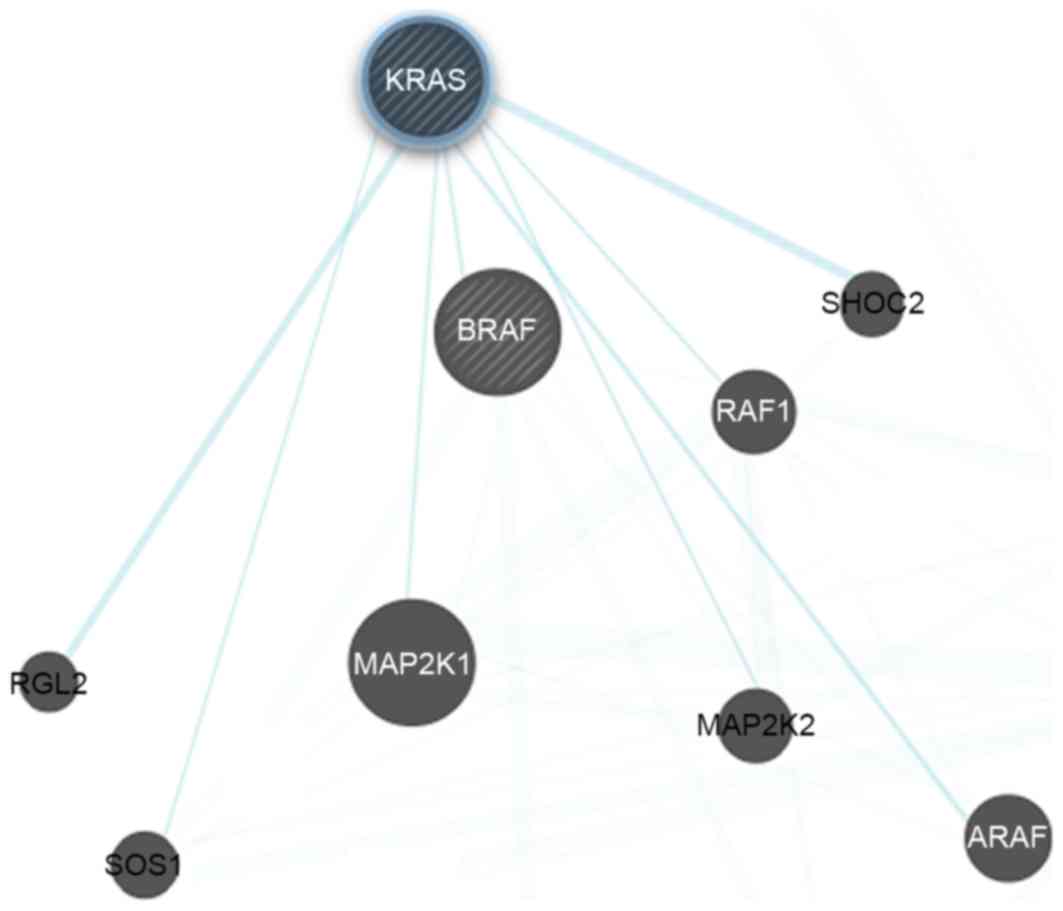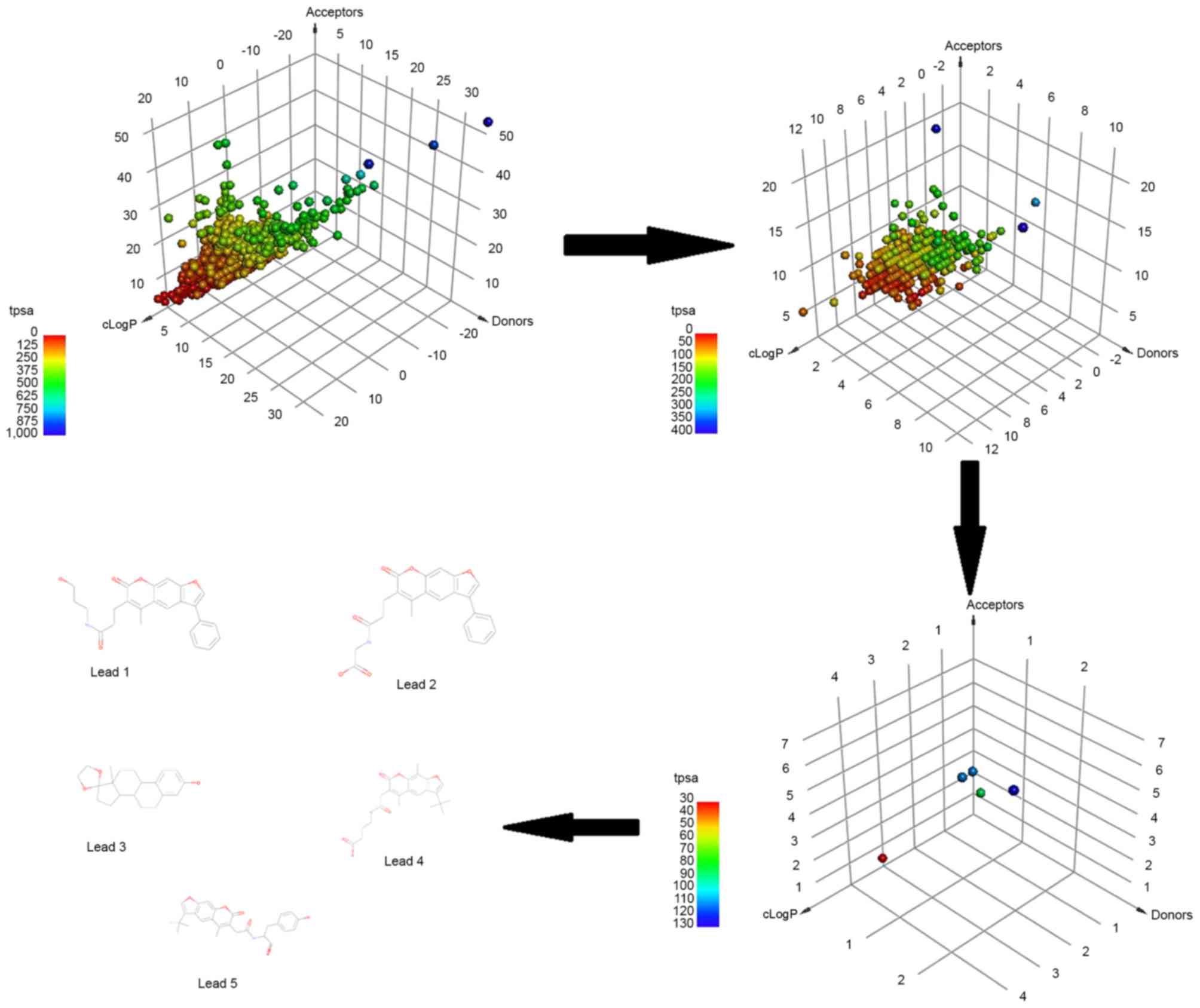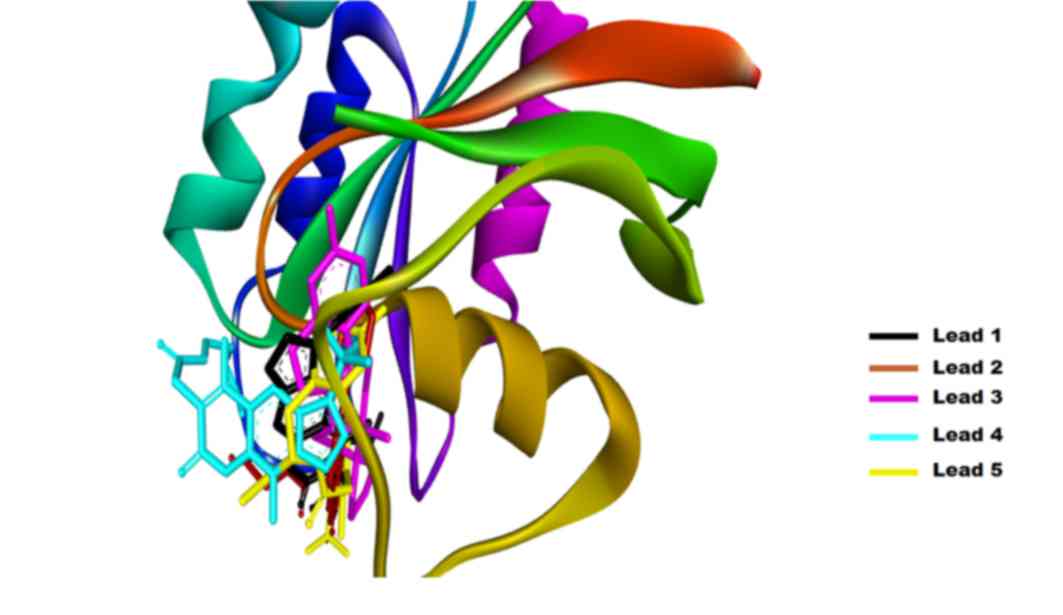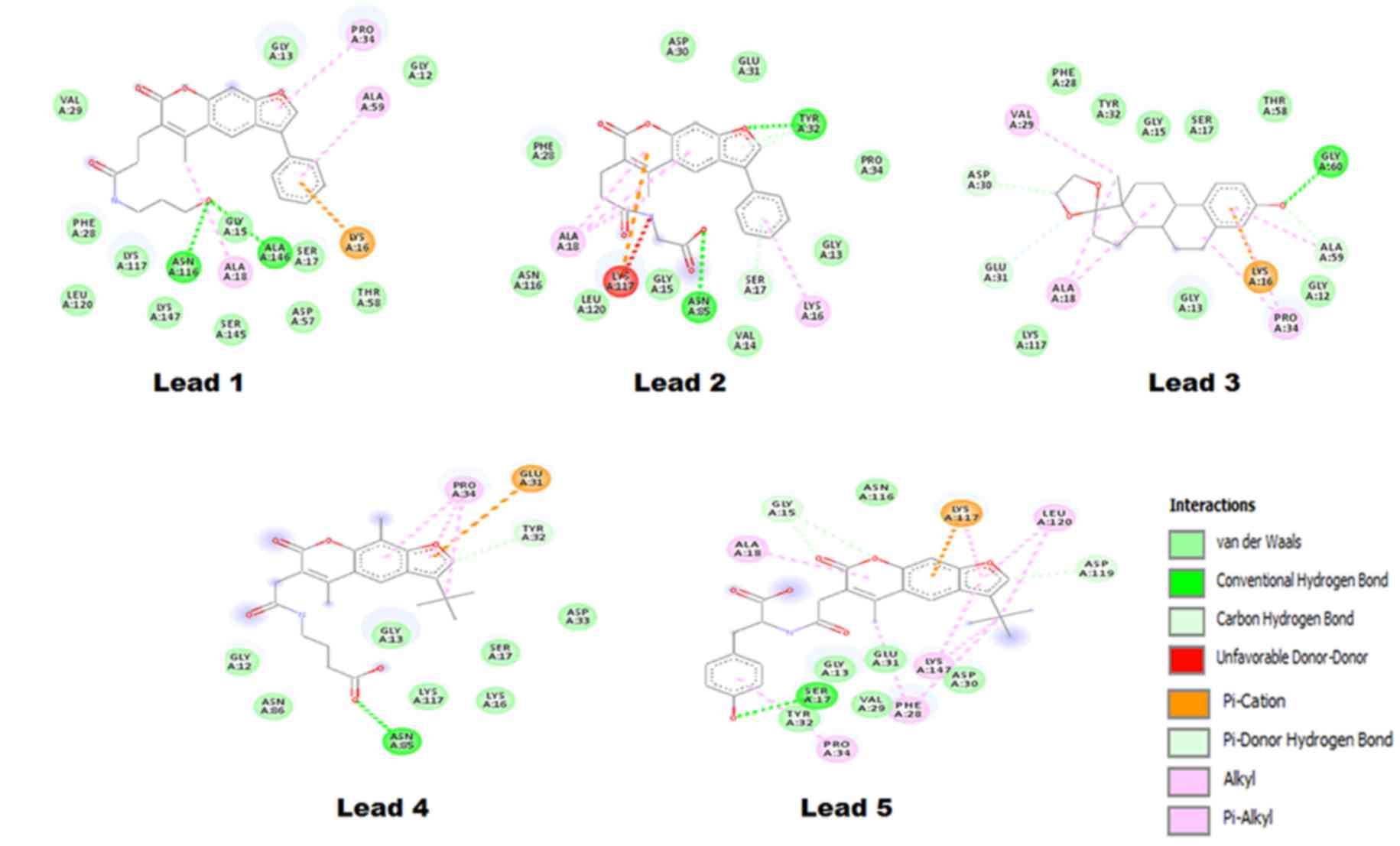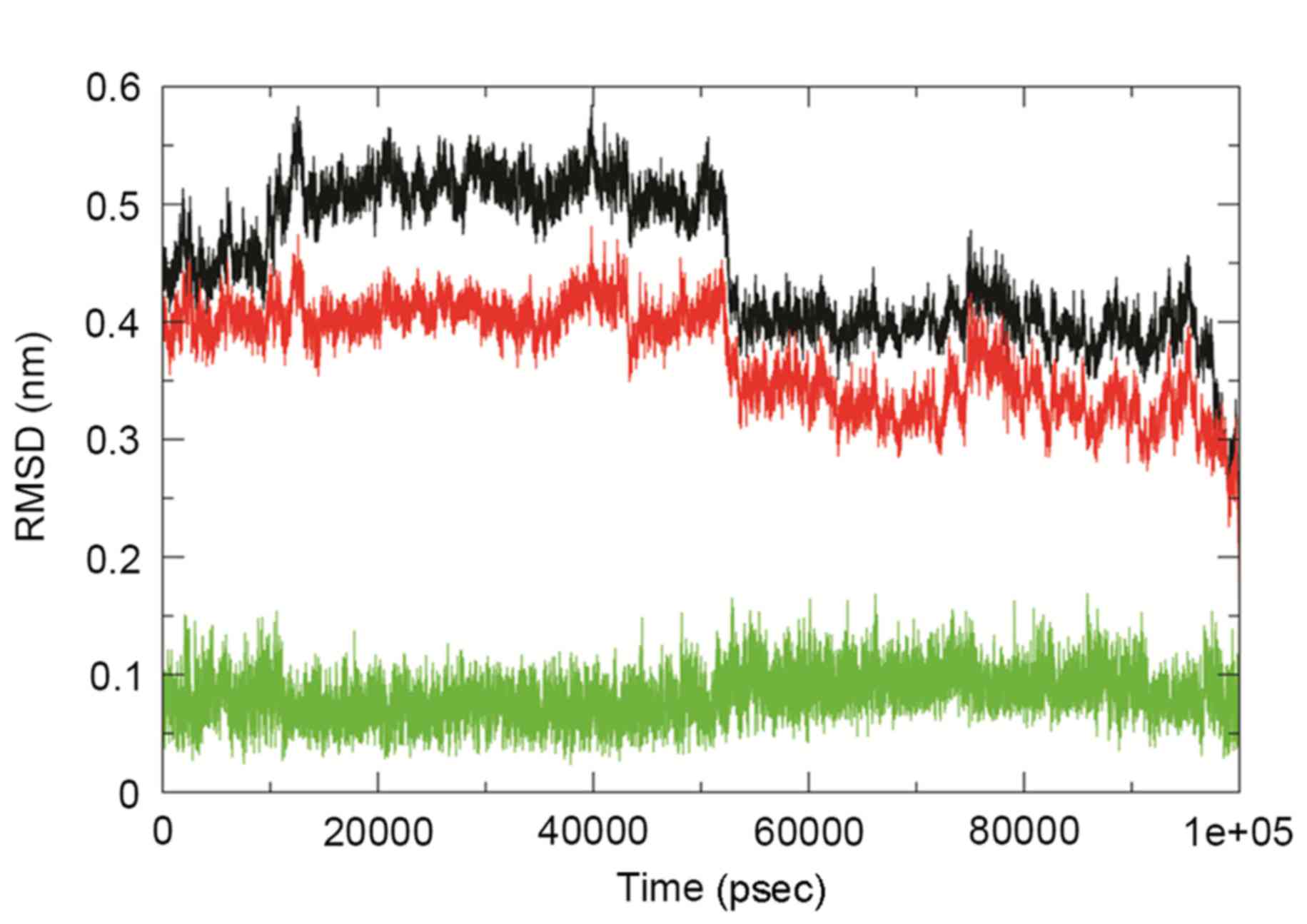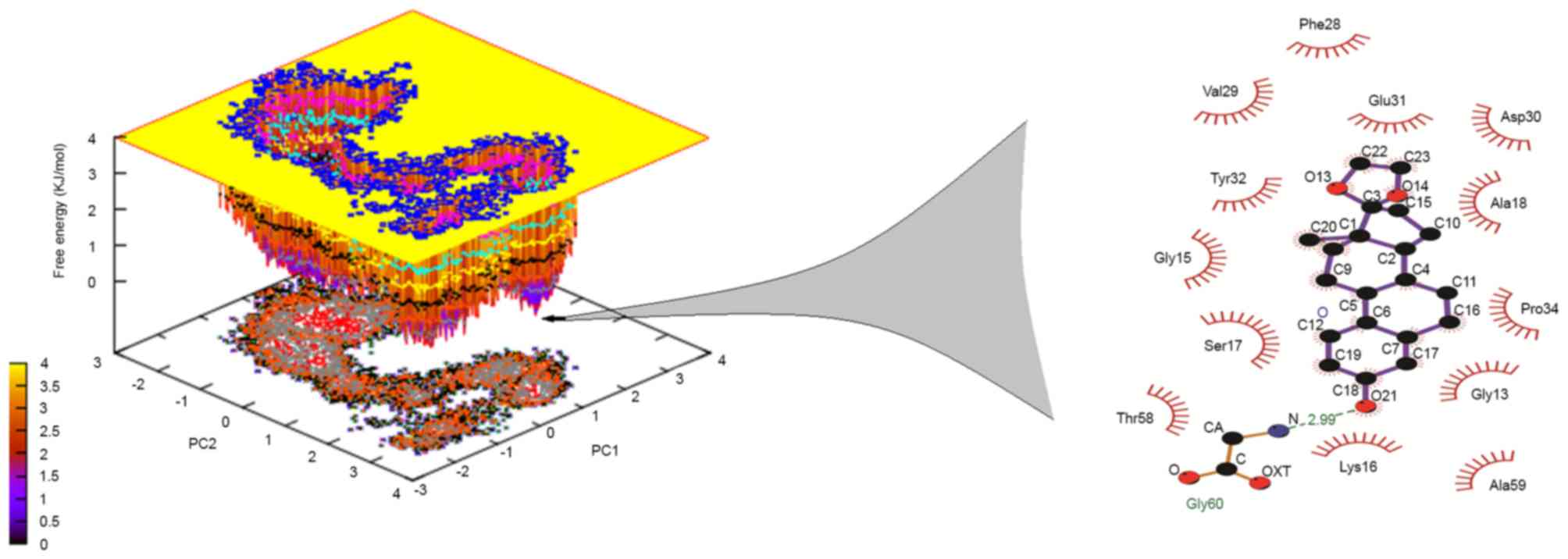|
1
|
Schwartz G and Fehlings MG: Evaluation of
the neuroprotective effects of sodium channel blockers after spinal
cord injury: Improved behavioral and neuroanatomical recovery with
riluzole. J Neurosurg. 94(2 Suppl): 1–256. 2001.
|
|
2
|
Dobkin BH and Havton LA: Basic advances
and new avenues in therapy of spinal cord injury. Annu Rev Med.
55:255–282. 2004. View Article : Google Scholar : PubMed/NCBI
|
|
3
|
Sekhon LH and Fehlings MG: Epidemiology,
demographics, and pathophysiology of acute spinal cord injury.
Spine (Phila Pa 1976). 26(24 Suppl): S2–S12. 2001. View Article : Google Scholar : PubMed/NCBI
|
|
4
|
Harvey C, Wilson SE, Greene CG, Berkowitz
M and Stripling TE: New estimates of the direct costs of traumatic
spinal cord injuries: Results of a nationwide survey. Paraplegia.
30:834–850. 1992.PubMed/NCBI
|
|
5
|
Albin MS and White RJ: Epidemiology,
physiopathology, and experimental therapeutics of acute spinal cord
injury. Crit Care Clin. 3:441–452. 1987.PubMed/NCBI
|
|
6
|
Porter R: The Cambridge illustrated
history of medicine. Cambridge Univ Press; pp. 4002001
|
|
7
|
Silva NA, Sousa N, Reis RL and Salgado AJ:
From basics to clinical: A comprehensive review on spinal cord
injury. Prog Neurobiol. 114:25–57. 2014. View Article : Google Scholar : PubMed/NCBI
|
|
8
|
Cadotte DW and Fehlings MG: Spinal cord
injury: A systematic review of current treatment options. Clin
Orthop Relat Res. 469:732–741. 2011. View Article : Google Scholar : PubMed/NCBI
|
|
9
|
Budh CN and Osteråker AL: Life
satisfaction in individuals with a spinal cord injury and pain.
Clin Rehabil. 21:89–96. 2007. View Article : Google Scholar : PubMed/NCBI
|
|
10
|
Varma AK, Das A, Wallace G IV, Barry J,
Vertegel AA, Ray SK and Banik NL: Spinal cord injury: A review of
current therapy, future treatments, and basic science frontiers.
Neurochem Res. 38:895–905. 2013. View Article : Google Scholar : PubMed/NCBI
|
|
11
|
Bracken MB: Steroids for acute spinal cord
injury. Cochrane Database Syst Rev. 1:CD0010462012.PubMed/NCBI
|
|
12
|
Bracken MB, Collins WF, Freeman DF,
Shepard MJ, Wagner FW, Silten RM, Hellenbrand KG, Ransohoff J, Hunt
WE, Perot PL Jr..et al: Efficacy of methylprednisolone in acute
spinal cord injury. JAMA. 251:45–52. 1984. View Article : Google Scholar : PubMed/NCBI
|
|
13
|
Bracken MB, Shepard MJ, Collins WF Jr,
Holford TR, Baskin DS, Eisenberg HM, Flamm E, Leo-Summers L, Maroon
JC, Marshall LF, et al: Methylprednisolone or naloxone treatment
after acute spinal cord injury: 1-year follow-up data. results of
the second national acute spinal cord injury study. J Neurosurg.
76:23–31. 1992. View Article : Google Scholar : PubMed/NCBI
|
|
14
|
Bracken MB, Shepard MJ, Collins WF,
Holford TR, Young W, Baskin DS, Eisenberg HM, Flamm E, Leo-Summers
L, Maroon J, et al: A randomized, controlled trial of
methylprednisolone or naloxone in the treatment of acute
spinal-cord injury: Results of the second national acute spinal
cord injury study. N Engl J Med. 322:1405–1411. 1990. View Article : Google Scholar : PubMed/NCBI
|
|
15
|
Tator CH: Review of treatment trials in
human spinal cord injury: Issues, difficulties, and
recommendations. Neurosurgery. 59:957–987. 2006. View Article : Google Scholar : PubMed/NCBI
|
|
16
|
Chvatal SA, Kim YT, Bratt-Leal AM, Lee H
and Bellamkonda RV: Spatial distribution and acute
anti-inflammatory effects of methylprednisolone after sustained
local delivery to the contused spinal cord. Biomaterials.
29:1967–1975. 2008. View Article : Google Scholar : PubMed/NCBI
|
|
17
|
Das A, Smith JA, Gibson C, Varma AK, Ray
SK and Banik NL: Estrogen receptor agonists and estrogen attenuate
TNF-α-induced apoptosis in VSC4.1 motoneurons. J Endocrinol.
208:171–182. 2011. View Article : Google Scholar : PubMed/NCBI
|
|
18
|
Bains M and Hall ED: Antioxidant therapies
in traumatic brain and spinal cord injury. Biochim Biophys Acta.
1822:675–684. 2012. View Article : Google Scholar : PubMed/NCBI
|
|
19
|
Rong W, Wang J, Liu X, Jiang L, Wei F,
Zhou H, Han X and Liu Z: 17β-estradiol attenuates neural cell
apoptosis through inhibition of JNK phosphorylation in SCI rats and
excitotoxicity induced by glutamate in vitro. Int J Neurosci.
122:381–387. 2012. View Article : Google Scholar : PubMed/NCBI
|
|
20
|
Lutton C, Young YW, Williams R, Meedeniya
AC, Mackay-Sim A and Goss B: Combined VEGF and PDGF treatment
reduces secondary degeneration after spinal cord injury. J
Neurotrauma. 29:957–970. 2012. View Article : Google Scholar : PubMed/NCBI
|
|
21
|
Ray SK, Samantaray S, Smith JA, Matzelle
DD, Das A and Banik NL: Inhibition of cysteine proteases in acute
and chronic spinal cord injury. Neurotherapeutics. 8:180–186. 2011.
View Article : Google Scholar : PubMed/NCBI
|
|
22
|
Lee JY, Choi SY, Oh TH and Yune TY:
17β-Estradiol inhibits apoptotic cell death of oligodendrocytes by
inhibiting RhoA-JNK3 activation after spinal cord injury.
Endocrinology. 153:3815–3827. 2012. View Article : Google Scholar : PubMed/NCBI
|
|
23
|
Samantaray S, Smith JA, Das A, Matzelle
DD, Varma AK, Ray SK and Banik NL: Low dose estrogen prevents
neuronal degeneration and microglial reactivity in an acute model
of spinal cord injury: Effect of dosing, route of administration,
and therapy delay. Neurochem Res. 36:1809–1816. 2011. View Article : Google Scholar : PubMed/NCBI
|
|
24
|
Wang YF, Fan ZK, Cao Y, Yu DS, Zhang YQ
and Wang YS: 2-Methoxyestradiol inhibits the up-regulation of AQP4
and AQP1 expression after spinal cord injury. Brain Res.
1370:220–226. 2011. View Article : Google Scholar : PubMed/NCBI
|
|
25
|
Knoller N, Auerbach G, Fulga V, Zelig G,
Attias J, Bakimer R, Marder JB, Yoles E, Belkin M, Schwartz M and
Hadani M: Clinical experience using incubated autologous
macrophages as a treatment for complete spinal cord injury: Phase I
study results. J Neurosurg Spine. 3:173–181. 2005. View Article : Google Scholar : PubMed/NCBI
|
|
26
|
Xu D, Cao F, Sun S, Liu T and Feng S:
Inhibition of the Ras/Raf/ERK1/2 signaling pathway restores
cultured spinal cord-injured neuronal migration, adhesion, and
dendritic spine development. Neurochem Res. 41:2086–2096. 2016.
View Article : Google Scholar : PubMed/NCBI
|
|
27
|
Bonni A, Brunet A, West AE, Datta SR,
Takasu MA and Greenberg ME: Cell survival promoted by the Ras-MAPK
signaling pathway by transcription-dependent and -independent
mechanisms. Science. 286:1358–1362. 1999. View Article : Google Scholar : PubMed/NCBI
|
|
28
|
Chan KM, Gordon T, Zochodne DW and Power
HA: Improving peripheral nerve regeneration: From molecular
mechanisms to potential therapeutic targets. Exp Neurol.
261:826–835. 2014. View Article : Google Scholar : PubMed/NCBI
|
|
29
|
Mazzoni IE, Saïd FA, Aloyz R, Miller FD
and Kaplan D: Ras regulates sympathetic neuron survival by
suppressing the p53-mediated cell death pathway. J Neurosci.
19:9716–9727. 1999.PubMed/NCBI
|
|
30
|
Liu ZD, Zhang S, Hao JJ, Xie TR and Kang
JS: Cellular model of neuronal atrophy induced by DYNC1I1
deficiency reveals protective roles of RAS-RAF-MEK signaling.
Protein Cell. 7:638–650. 2016. View Article : Google Scholar : PubMed/NCBI
|
|
31
|
Kanno H, Ozawa H, Sekiguchi A, Yamaya S,
Tateda S, Yahata K and Itoi E: The role of mTOR signaling pathway
in spinal cord injury. Cell Cycle. 11:3175–3179. 2012. View Article : Google Scholar : PubMed/NCBI
|
|
32
|
Namikawa K, Honma M, Abe K, Takeda M,
Mansur K, Obata T, Miwa A, Okado H and Kiyama H: Akt/protein kinase
B prevents injury-induced motoneuron death and accelerates axonal
regeneration. J Neurosci. 20:2875–2886. 2000.PubMed/NCBI
|
|
33
|
Sun Z, Wen Y, Mao Q, Hu L, Li H, Sun Z and
Wang D: Adenosine-triphosphate promoting repair of spinal cord
injury by activating mammalian target of rapamycin/signal
transducers and activators of transcription 3 signal pathway in
rats. Zhongguo Xiu Fu Chong Jian Wai Ke Za Zhi 24: 165–171, 2010.
Zhongguo Xiu Fu Chong Jian Wai Ke Za Zhi 24: 165–171, 2010. 24:
165–171, 2010:165–171, 2010–171, 2010. 2010.(In Chinese).
|
|
34
|
Liu A, Prenger MS, Norton DD, Mei L,
Kusiak JW and Bai G: Nerve growth factor uses Ras/ERK and
phosphatidylinositol 3-kinase cascades to up-regulate the
N-methyl-D-aspartate receptor 1 promoter. J Biol Chem.
276:45372–45379. 2001. View Article : Google Scholar : PubMed/NCBI
|
|
35
|
Liu T, Cao FJ, Xu Dd, Xu YQ and Feng SQ:
Upregulated Ras/Raf/ERK1/2 signaling pathway: A new hope in the
repair of spinal cord injury. Neural Regen Res. 10:792–796. 2015.
View Article : Google Scholar : PubMed/NCBI
|
|
36
|
Lo LW, Cheng JJ, Chiu JJ, Wung BS, Liu YC
and Wang DL: Endothelial exposure to hypoxia induces Egr-1
expression involving PKCalpha-mediated Ras/Raf-1/ERK1/2 pathway. J
Cell Physiol. 188:304–312. 2001. View Article : Google Scholar : PubMed/NCBI
|
|
37
|
Stanciu M, Wang Y, Kentor R, Burke N,
Watkins S, Kress G, Reynolds I, Klann E, Angiolieri MR, Johnson JW
and DeFranco DB: Persistent activation of ERK contributes to
glutamate-induced oxidative toxicity in a neuronal cell line and
primary cortical neuron cultures. J Biol Chem. 275:12200–12206.
2000. View Article : Google Scholar : PubMed/NCBI
|
|
38
|
Cao F, Zhang X, Liu T, Li XW, Malik M and
Feng SQ: Up-regulation of Ras/Raf/ERK1/2 signaling in the spinal
cord impairs neural cell migration, neurogenesis, synapse
formation, and dendritic spine development. Chin Med J (Engl).
126:3879–3885. 2013.PubMed/NCBI
|
|
39
|
Yang K, Cao F, Sheikh AM, Malik M, Wen G,
Wei H, Ted Brown W and Li X: Up-regulation of Ras/Raf/ERK1/2
signaling impairs cultured neuronal cell migration, neurogenesis,
synapse formation, and dendritic spine development. Brain Struct
Funct. 218:669–682. 2013. View Article : Google Scholar : PubMed/NCBI
|
|
40
|
Chikan NA, Bhavaniprasad V, Anbarasu K,
Shabir N and Patel TN: From natural products to drugs for
epimutation computer-aided drug design. Appl Biochem Biotechnol.
170:164–175. 2013. View Article : Google Scholar : PubMed/NCBI
|
|
41
|
Amin A, Chikan NA, Mokhdomi TA, Bukhari S,
Koul AM, Shah BA, Gharemirshamlu FR, Wafai AH, Qadri A and Qadri
RA: Irigenin, a novel lead from Western Himalayan chemiome inhibits
fibronectin-extra domain a induced metastasis in lung cancer cells.
Sci Rep. 6:371512016. View Article : Google Scholar : PubMed/NCBI
|
|
42
|
Zhao GF, Huang ZA, Du XK, Yang ML, Huang
DD and Zhang S: Molecular docking studies of traditional chinese
medicinal compounds against known protein targets to treat
non-small cell lung carcinomas. Mol Med Rep. 14:1132–1138. 2016.
View Article : Google Scholar : PubMed/NCBI
|
|
43
|
van Gunsteren WF: Biomolecular Simulation:
The GROMOS96 Manual and User Guide. Biomos; Zürich: pp. 7571996
|
|
44
|
Trott O and Olson AJ: AutoDock Vina:
Improving the speed and accuracy of docking with a new scoring
function, efficient optimization, and multithreading. J Comput
Chem. 31:455–461. 2010.PubMed/NCBI
|
|
45
|
Lipinski CA: Lead- and drug-like
compounds: The rule-of-five revolution. Drug Discov Today Technol.
1:337–341. 2004. View Article : Google Scholar : PubMed/NCBI
|
|
46
|
Morris GM, Huey R, Lindstrom W, Sanner MF,
Belew RK, Goodsell DS and Olson AJ: AutoDock4 and AutoDockTools4:
Automated docking with selective receptor flexibility. J Comput
Chem. 30:2785–2791. 2009. View Article : Google Scholar : PubMed/NCBI
|
|
47
|
Berendsen HJ, van der Spoel D and van
Drunen R: GROMACS: A message-passing parallel molecular dynamics
implementation. Com Phy Commun. 91:43–56. 1995. View Article : Google Scholar
|
|
48
|
Schüttelkopf AW and Van Aalten DM: PRODRG:
A tool for high-throughput crystallography of protein-ligand
complexes. Acta Crystallogr D Biol Crystallogr. 60:1355–1363. 2004.
View Article : Google Scholar : PubMed/NCBI
|
|
49
|
Darden T, York D and Pedersen L: Particle
mesh Ewald: An N-log(N) method for Ewald sums in large systems. J
Chem Phy. 98:10089–10092. 1993. View Article : Google Scholar
|
|
50
|
Kholmurodov K, Smith W, Yasuoka K, Darden
T and Ebisuzaki T: A smooth-particle mesh Ewald method for DL_POLY
molecular dynamics simulation package on the Fujitsu VPP700. J Com
Chem. 21:1187–1191. 2000. View Article : Google Scholar
|
|
51
|
Hess B, Kutzner C, Van Der Spoel D and
Lindahl E: GROMACS 4: Algorithms for highly efficient,
load-balanced, and scalable molecular simulation. J Chem Theory
Comput. 4:435–447. 2008. View Article : Google Scholar : PubMed/NCBI
|
|
52
|
Kumari R and Kumar R; Open Source Drug
Discovery Consortium; Lynn A: g_mmpbsa - a GROMACS tool for
high-throughput MM-PBSA calculations. J Chem Inf Model.
54:1951–1962. 2014. View Article : Google Scholar : PubMed/NCBI
|
|
53
|
DeLano WL: The PyMOL Molecular Graphics
System. DeLano Scientific; Palo Alto, CA: 2002
|
|
54
|
Studio D: Accelrys Inc.; San Diego, CA,
USA: 2013
|
|
55
|
Turner PJ: XMGRACE, Version 5.1.19. Center
for Coastal and Land-Margin Research. Oregon Graduate Institute of
Science and Technology; Beaverton, OR: 2005
|
|
56
|
Racine J: Gnuplot 4.0: A portable
interactive plotting utility. J Appl Econome. 21:133–141. 2006.
View Article : Google Scholar
|
|
57
|
Lin B, Xu Y, Zhang B, He Y, Yan Y and He
MC: MEK inhibition reduces glial scar formation and promotes the
recovery of sensorimotor function in rats following spinal cord
injury. Exp Ther Med. 7:66–72. 2014. View Article : Google Scholar : PubMed/NCBI
|
|
58
|
Chen J, Rusnak M, Lombroso PJ and Sidhu A:
Dopamine promotes striatal neuronal apoptotic death via ERK
signaling cascades. Eur J Neurosci. 29:287–306. 2009. View Article : Google Scholar : PubMed/NCBI
|



